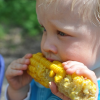Older Americans need more motivation to exercise regularly, say a series of studies published in the American Journal of Preventive Medicine.
Already, 98 percent of Americans over 50 say that "getting exercise is important to staying healthy," according to an AARP survey. But just knowing what's good for them isn't enough.
"Messages must move beyond conveying basic health benefits to focus on encouraging and inspiring audience members to get moving, while being careful not to alienate or turn them off," say Marcia Ory, Ph.D., M.P.H., of the Texas A&M University System School of Rural Public Health and colleagues.
Ignoring clich's about older people and exercise might help, the researchers note. Being old does not mean life is over, Ory says, adding that elderly people receive as much benefit from exercising or any healthy behavior as younger people do. Stereotypes of old age as a time of poor health is a simplistic generalization, she adds, not an accurate description of the status of individuals.
"The majority of older people are able to perform functions necessary for normal living and to manage independently until very advanced ages," she says. "It is never too late to gain benefits from increasing physical activity."
Social and behavioral factors - like diet and exercise - play the most important role in determining longevity and quality of life among the elderly. Genetics factors contribute only 25 percent to human longevity, despite familiar injunctions to "choose your parents wisely."
But older people won't be motivated by stern lectures about "getting off the couch" or images of exercise as sweaty, physical labor, Ory says. In fact, even the word "exercise" should be replaced with something less intimidating like "physical activity."
"While audiences need motivation and encouragement to get moving, they are also hungry for specific directions and guidance," she says. Instead of vaguely suggesting a brisk walk, she suggests that advocates say: "Get your heart rate up, at least 30 minutes a day, at least five days a week."
Older people say they look for activities that are moderate in intensity, reasonably inexpensive, simple and convenient to engage in and, for older women in particular, include opportunities to socialize.
Motivating older people to get out and move also means recognizing the obstacles that block their paths. Some are physical: unsafe streets, absent sidewalks, nasty winters or steamy summers. But fear of injury and lack of time, energy, skill or motivation take a toll as well.
One barrier to greater participation in physical activity, oddly enough, is the familiar injunction to consult a doctor before starting an exercise program, says Durham, North Carolina, Veterans' Affairs Medical Center researcher Miriam C. Morey, Ph.D. Several national medical organizations tell doctors to take a complete medical history and do a physical examination, laboratory tests, and a stress test before prescribing exercise to patients.
But these precautions often fail to predict cardiac events in patients without symptoms, Morey says. Adverse events from exercise are rare, but the universal caution to see a doctor creates an image of exercise as potentially harmful.
"Clinicians [should] shift from a traditional role of shielding patients from all possible harm and adopt a role of enabling participation," she says. Doctors should become advocates for physical activity rather than the gatekeepers they seem to be at present.
"Medical knowledge and skill are essential to aggressively seek solutions for those with physical conditions that limit participation or present impediments," Morey says.
She suggests facetiously that perhaps medical guidelines should require a doctor's permission for anyone who intends to remain sedentary. A "start-low-and-go-slow" approach is a good way to begin a personal exercise plan, says Morey.
Center for the Advancement of Health










